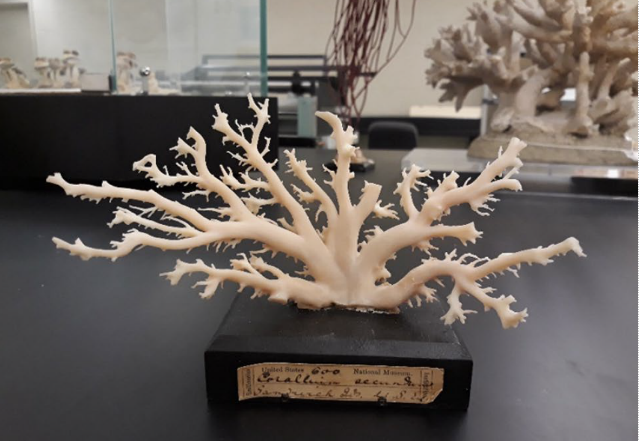From a 19th-century holotype to rare precious coral necklaces – scientists discover a new precious coral species used in high-end jewellery
Summary:
A joint team from the Swiss Gemmological Institute SSEF and the Zurich Institute of Forensic Medicine (University of Zurich) has refined a DNA-based method to distinguish look-alike “precious corals” used in luxury jewellery—some of which are regulated by CITES and even new to science.
Full story:
Two peer-reviewed papers published this month in Coral Reefs and Diversity detail how the researchers extracted minute traces of DNA from precious corals—partly just a few milligrams drilled from existing holes of beads—then matched the sequences to newly built reference libraries including museum “type” specimens.
“Several precious coral species present very similar characteristics and colours, and traditional gemmological techniques can’t tell them apart,” said Dr Laurent E. Cartier, Head of Special Initiatives at SSEF. “By reading their genetic fingerprints, we can now identify different species unambiguously—providing greater transparency and allowing us to further document the provenance of historic and modern precious coral jewels.”

The Coral Reefs study revisited the 1840s holotype of Pleurocorallium secundum held at the Smithsonian Museum (Washington DC), proving—through low-copy number DNA analysis—that the original and later redescribed specimens are indeed the same species and clarifying its true range from Hawai‘i to the South China Sea.

In the journal Diversity, the team analysed an exceptional “angel’s-skin” necklace whose delicate light-pink hue commands top market prices. DNA fingerprinting showed the material does not match the two species previously assumed (Pleurocorallium elatius or Pleurocorallium secundum) but belongs to the Pleurocorallium norfolkicum species complex—and may represent a precious coral species hitherto unknown in the gem trade and to science. A matching colony fragment traced to Vietnam hints at an undiscovered fishery.
“Our approach can recover enough DNA from fully calcified coral samples to identify the species of precious corals found in high-value jewels in a quasi-non-destructive manner,” explained Dr Bertalan Lendvay, research associate at the University of Zurich. “What began as a forensic challenge has become a doorway to discovering a new species in the precious coral trade and contributing to coral conservation efforts.”
Journal references:
Lendvay, B., Cartier, L.E., Sato, A., Krzemnicki, M.S., Nonaka, M., Yasuda, N. et al. Genetic testing of a high-end ‘angel skin’ precious coral necklace identifies a species new to the precious coral trade and potentially new to science. Diversity, 17, 395. https://doi.org/10.3390/d17060395
Lendvay, B., Morf, N.V., Cartier, L.E., Krzemnicki, M.S. & Nonaka, M. Trace DNA from a century-old holotype specimen resolves taxonomic uncertainties: the case of the Hawaiian pink precious coral (Pleurocorallium secundum), a CITES-listed species used in jewellery. Coral Reefs. https://doi.org/10.1007/s00338-025-02678-x